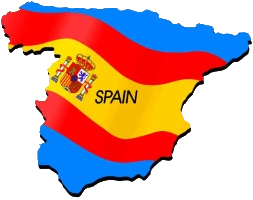Spain -- School-age
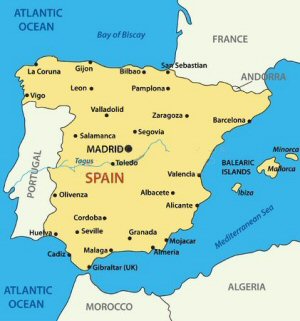
Spain is located in Southwestern Europe on the Iberian Peninsula.
Spanish terriory includes the Balearic Islands (Mallorca, Menorca and Ibiza) in the Mediterranean Sea. The Canary Islands in the Atlantic Ocean and Ceuta and Melilla in northern Africa.
Spain and Portugal share the Iberian Peninsula, a vaguely square-shaped country at the far southwestern edge of Europe. The Iberian Peninsula also includes the countries of Andorra and the British Crown colony of Gibraltar.
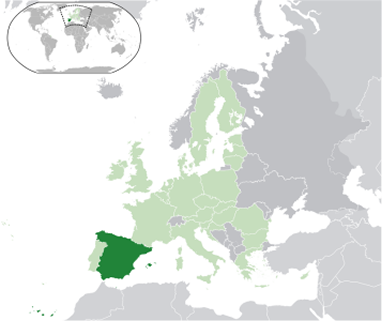
Animals
Spain has many different types of wildlife as the country has forests, woodlands, and seashore.
The Iberian
lynx is native to Spain, it is the most endangered and the only large
carnivore in Europe.
Along the seashore can be seen dolphins, seals, otters, and whales

Iberian Lynx
Explorers
The Age of Exploration began in the 15th century with Europeans exploring regions of the world for commercial, military, scientific, religious, and other purposes. Spain and Portugal led the Europeans into the Age of Discovery.
Many European explorers traveled to the New World.
Latin America covers all the Americas south of the U.S. border - Mexico, Central America, South America, Puerto Rico and the West Indies. Most of its people speak Spanish or Portuguese and belong to the Roman Catholic Church.Christophe Columbus
Credited for discovering America.
Juan Ponce de Leon
First European to explore Florida.
Hernando Cortez
Conquered the Aztecs in Mexico.
Francisco Pizarro
Conquered Peru.
Hernando De Soto
Discovered the Mississippi River.
Francisco Vazquez de Coronado
Explored the U.S. southwest.
Land
Climate
Hot summers and cold winters in the interior. Partly cloudy and cool along coast.
Mountians
There are five big mountain ranges crossing Spain. Spain is the most mountainous country in Europe.
The Pyrenees Mountain ranges are a natural border between France and Spain. It separates the Iberian Peninsula from the rest of Europe
In the southernmost part of Spain is the Mountain Range Sierra Morena.
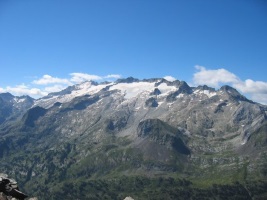
Pico del Aneto, the highest
mountain of the Pyrenees.
Plants

Esparto Grass
Esparto grass is a coarse grass, native to Southern Spain, which is used for making paper.
The dry Spain has a combination of wood-land and scrub that can thrive with very little moisture.
In the Mediterranean area holm oak-cork forests are interspersed with a coniferous mass dominated by the Aleppo pine. In the higher altitudes, is conifers more suitable to mountainous regions, such as the larch and the Scotch pine. A type of desert with very scant vegetation extends to the shores of the Mediterranean in the southeastern parts of Andalusia.
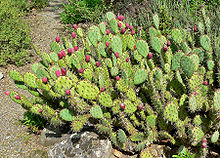
Prickly Pear
A typical forest of holm oaks and cork trees survives in Andalusia. In the Southwest parts of Andalusia several exotic species of plants are frequently found, such as the dwarf fan palm, the Indian prickly-pear and aloe plants.
Artist
Spain has an extraordinary artistic heritage. Toledo-based artists El Greco and Diego Velázquez. Francisco Goya in the 18th century was Spain's most prolific painter and he produced some wonderfully unflattering portraits of royalty.
The art world in the early 20th century was influenced by a remarkable group of Spanish artists: Pablo Picasso, Juan Gris, Joan Miró, and Salvador Dalí.
Art Lesson
Picasso Face
If you have access to a variety of materials a fun face for children to make is with material. Choice one material for the face. Choice different materials for the facial features. Add ear-rings with a different material. Fun and easy for all ages.
A. Pintura: Art Detective
Play this game and learn about Picasso and many other artists.
Pablo Picasso Video
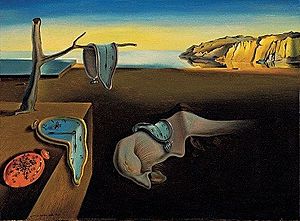
The Persistence of Memory
by Salvador Dali
Salvador Dalí
Melting Clocks made with paper plates. K-2.
Dali Melting Clocks made from clay grade 5.
In Time with Salvador Dali lesson at Crayola. Grades 3-5.
The Dali Museum lesson plans for children.
A lesson inspired by Dali a surreal tree.
Music
Music in Spain has a long history and has played an important role in the development of Western music.
Spanish music is often associated with traditional styles such as flamenco and classical guitar
Flamenco is the musical tradition in the country's south, in particular in Andalusia.
Guitar: Antonio Torres Jurado(1859)
Spanish luthier and guitarist Antonio Torres is the most important guitar maker of the 19th centuryis and is known as the father of the modern classical guitar. altered the proportions of the guitar in the 1880's. The modern "classical" guitar took its present form from the various elements deigned by Torres creating a new design that has shaped the desing of quitars to today. Torres guitar design is the model used today in classical and acoustic guitars the world over. His design radically improved the volume, tone and projection of the guitar. His guitar design has remained essentially unchanged to this day.
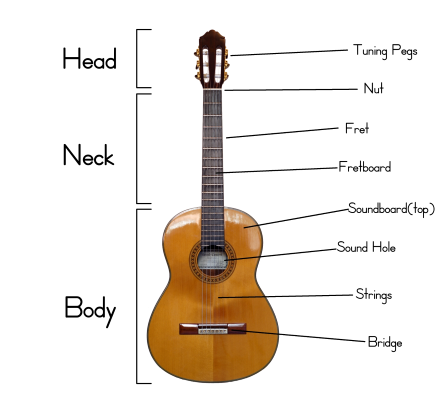
Acoustic guitar parts.
Children's Music Review
The Song of the Torero
Calvin B. Burke (Artist), Kim Maerkl (Artist, Composer), Gruber & Maklar Duo (Artist)
A grandfather who tells an amazing tale to his grandson while strolling through the hills and reveals an extraordinary secret. This CD is impressive with gorgeous guitar music that enhances the wonderful story creating a fascinating listening experience for all ages. Beautiful.
ClickThe Song of the Torero to order.
Read
Condensed and short history of Spain.
National Geographic: Spain
History and more.
English Borrows from Spanish
Words in the English language that came from Spanish words.
Holidays
Part of the Fiesta of San Fermin is the Encierro or Running of the Bulls. In Pamplona, Spain, the second week of July is dedicated to the Running of the Bulls. The event is world famous. The tradition was immortalized in Ernest Hemingway's novel The Sun Also Rise in 1926, after which time many people from all over the world began attending the festival and running with the bulls.
Things to Do
Color Pages
Spain Artists Color Pages--El Greco, Velazquez, Goya...
Spanish Artists Color Pages--Picasso, Miro, Goya, Dalí
Spanish Children Dancers color pages
Spain Flag color page
History of Spain Video

